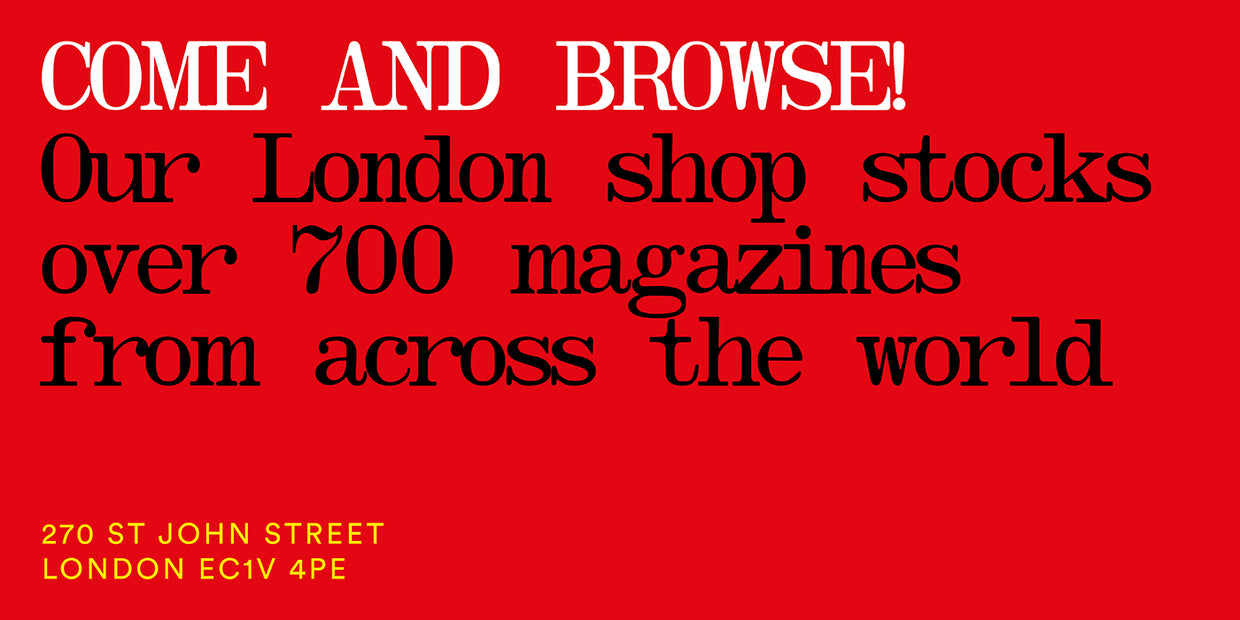
The SPD Awards
It’s creative awards time again, and the annual question arises, ‘Why bother entering your work?’ I thought it worth taking a closer look and asking the people behind magazine-centric award programmes exactly that.
It’s a question that’s only got easier to answer with an abrupt ‘No!’ as more and more work gets shared online. Magazine designers from across the world can get a quick hit of attention by sending their work to Coverjunkie, It’s Nice That and us here at magCulture to name a few curated environments; plus you can follow the publications and designers on Instagram and see their work first hand. So why pay to have your work judged at annual Awards?
That was the question I posed to this year’s co-chairs of New York’s Society of Publications Designers (SPD), a group that has run their annual awards since 1965, when the publishing world was obviously very different.
For most of the 60 years since, the winners were announced at a grand gala dinner, with all the winning work published in a smart, hardback book. I’ve seen SPD’s work close-up: I’ve had work featured in those books, have judged several times, and was also co-chair one year, helping announce winners at the dinner gala. It felt exciting and important at the time, but today the Society is a smaller, less financed set-up, reflecting the industry it celebrates.
The SPD continue to judge entries every year, compiling the best editorial design work from that entered, and awarding titles for best design across multiple categories. The judging now takes place online, and the results are emailed rather than announced at an event. Like all awards programmes, they are seeking a more international entry cohort—reflected in a more global set of judges—and have also expanded categories to include dedicated indie awards. Recent indie winners include Inque, Serviette and Magneto, and while the holy trinity of NY magazines—The New York Times Magazine, New York, and The New Yorker—dominate most categories, it does feel there is space for more indies to sit alongside them.
I asked designers Anton Ioukhnovets (left, above) & Tom Alberty, the co-chairs of this year’s 60th edition of the SPD Awards, how they approach the promotion and judging, and why people should enter.
What are you working on right now?
Anton: Since I left Esquire in 2017, my job has an interesting duality. By day, so to speak, I am a creative director at 30point, an agency that specializes in B2B communications. I work on a variety of corporate reports, books on corporate history, assign a ton of illustrations and still put together a quarterly financial magazine for the clients of Charles Schwab co.
On the flip side, outside of the agency work, I have two long running projects—I design Achtung (an independent German fashion magazine that just celebrated its 20th year) and a biannual bookazine from German luxury retailer MyTheresa.
Although I inevitably expanded my skills into the digital sphere, my passion (and good part of workload) has remained in print.
Tom: I’ve been design director at New York Magazine for 12 years now. As a biweekly, general interest newsmagazine, the variety of subjects we cover keeps things interesting. We had a good run of very ambitious issues at the end of 2024: our annual Power issue focusing on big-shot media types, a holiday gift guide with a cover by legend Seymour Chwast, and our our annual love letter to the city, the ‘Reasons to Love New York’ issue that featured a five-part cover with 40 current and past cast members of Saturday Night Live shot by David LaChapelle. Right now, I’m enjoying a little holiday quiet time.
What do you do as SPD chair?
T: Our job is to promote and get people to enter the SPD Awards competition, and assemble a diverse jury of smart and talented art directors, photo directors to pick the best work of 2024. Anton and I are chairs for the whole competition this year, we focus on a jury for print design, illustration, and photography; and we have brought on chairs to lead the digital design jury and for the editorial brand of the year jury.
A: The serious part of the job is to assemble a good group of co-chairs for digital and brand of year parts of the competiton. This year we have rising stars Shira Inbar and Mark Baker Sanchez chairing Digital ccompetiton, and a creative director who pivoted from print to Brand world, Wanyi Jiang, chairing Brand of the Year. Magazine of the year competiton is chaired by a person who had an enormous impact on American editorial design through the years—Luke Hayman, one of the New York partners at Pentagram.
Together our job is to come up with a great group of judges to evaluate the work.
T: There’s the fun stuff too. Competition chairs design the call for entries and other parts of the competition. Anton and I worked together at GQ back, so it’s been fun collaborating again.
A: Every year SPD is branded differently. ‘Branded’ is a bit too strong of a word for it though. It’s kinda more like a new theme each year which originates with publications that each chair represents. So the fun part is to determine what that theme is and create all the promo material around it. This year we don’t really have a super defined theme. We could not settle on just one thing and ended up creating kinda like a general interest theme. In our promos we have dinosaurs, we have Pablo Delcan and the human A.I. generator, we have a variety of culture and sports references. It’s very much related to how we as designers excavate pop culture for inspiration. Above all, it’s irreverent and fun.
I’m sure you’ve both won SPD Awards. Tell us about them, what did they mean to you?
A: The world of magazine designers, art directors, design directors, creative directors, what have you, is much smaller now than it was in year’s past. But to me it was and still is a community. People move from magazine to magazine, ascending the short hierarchical ladder of the art department mostly through word of mouth. SPD is the organization solely dedicated to promote (and motivate) the excellence in magazine design. It was thrilling to get an SPD medal, it was thrilling enough to get a Merit and get your name in the Annual book. It meant recognition, it meant a little bit of a prestige in our small industry world, but most importantly, it pushed you to make more of smart and beautiful work. SPD is a catalyst.
T: Having your work recognized by the design community is always great, always an honour. Especially for an up-and-coming creative, it’s special, like being baptized as a real magazine maker, you’re on the map.
Dinosaur talk here: A million years ago, before Instagram, getting in the SPD Annual was one of the only ways we could see which designers and photo editors at magazines actually worked on what stories—it was a resource, you could see who had a strong year of work, and who you’d want to work with when you’re ready to hop to the next magazine. (There’s no printed annual anymore, but an online gallery is in the works.)
What’s valuable to me now as a director is the curating process of looking and the year’s work, deciding what you want to enter. Being critical, thinking about what’s the best work, what will be competitive against our peers; seeing how the designers on the team performed, seeing their highlights, how they’re growing and rose to make an interesting layout under tight deadlines.
What’s the process
T: SPD’s entry categories are tailored to the editorial story tellers in print and digital format. There are also photography, illustration and video categories. In total, there are 100 categories to choose from.
A: We try to invite judges that have different backgrounds. Folks that put together mainstream publications, indie magazines, folks who were in the magazine sphere and pivoted to other creative pursuits and the veterans of industry who are still at it. With virtual judging, it’s easier to add geographic diversity as well. (This was much harder in the days of in-person judging) This year we have a few people from England, Lebanon, Spain and Chile and the Netherlands.
Why should someone else enter?
T: I’ve been a judge for three or four competitions now, and the fun and excitement of seeing so much work. There’s seeing the good work from publications I’m familiar with, but it would always be really fun to see an entry from a publication that’s new or new to me. If the work is good it should be celebrated. As magazine people, SPD is special for us because, you’re getting judged by a jury of your peers. Other design competitions, editorial is one category among advertising and brand design and the rest—here, it’s exclusively editorial, visual storytelling.
A: SPD is tailored to editorial design whether it’s print or digital publication. And it’s judged by your peers. So to me, this makes this competition more interesting. Being acknowledged by the community—that’s what makes it special.
What do I think? I believe it’s a good thing to get your work in front of your peers, and to let them evaluate it against other projects. It’s one thing to win, but there is also the exchange of information and knowledge that comes with the judging process to consider. We all look at design work online, but preparing a coherent award entry is a useful channeling of thought around your own work as well as a chance to showcase your work in detail to a group of fellow designers.
In addition, as the mainstream publishers slow down, there is a space for the smaller indies to step in.
I say, if you can afford it, give it a go…
Find out more about entering here: spd.org/spd-60



